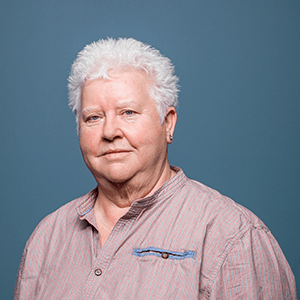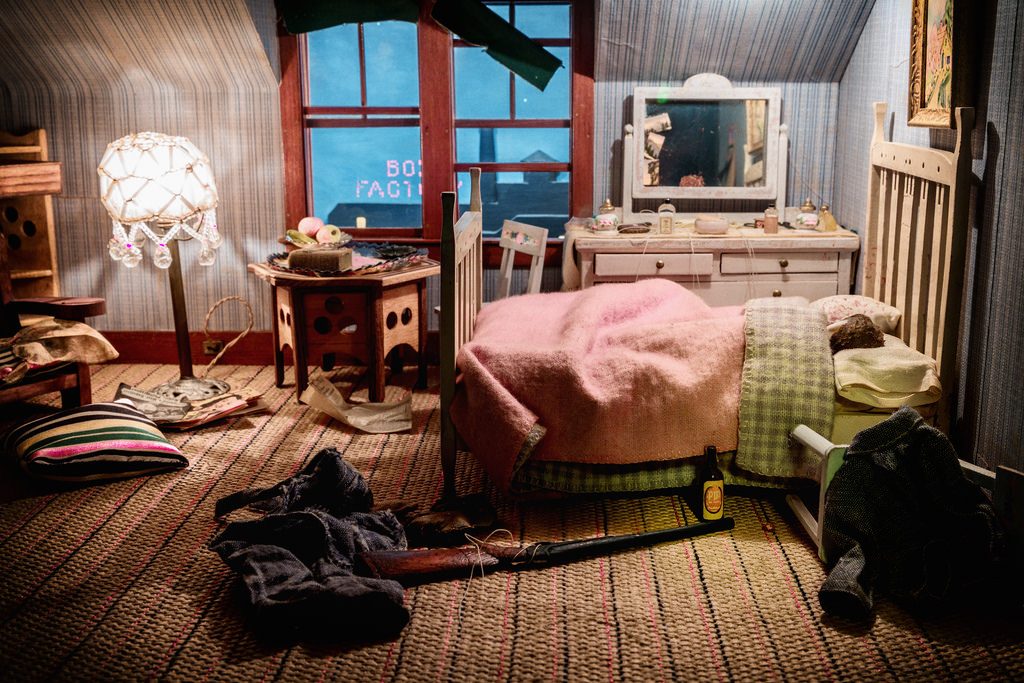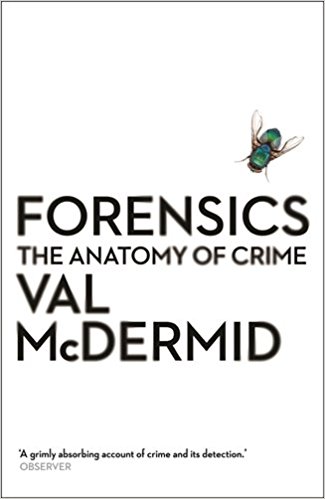Forensics Summary
7 min read ⌚
 What Bugs, Burns, Prints, DNA, and More Tell Us About Crime
What Bugs, Burns, Prints, DNA, and More Tell Us About Crime
Have you ever watched “Wire in the Blood”?
If not – you should. It’s a crime drama television series, so, let’s face it, you’ll be hooked by the second episode.
If so – don’t we have a treat for you! The creator of the character Dr. Tony Hill, Val McDermid, has written a non-fiction book about forensics.
And we have profiled it – to provide you with the “Forensics” summary.
Who Should Read “Forensics”? And Why?
If you like to read detective novels or watch CSI-themed shows, then “Forensics” is one of the best books we can recommend to you.
Really!
It’s got everything from history to practice, and, as a bonus, it’s written by a famous writer.
So, trust us, it doesn’t get much better than this.
About Val McDermid
Val McDermid is a Scottish crime writer, best known for the novels featuring Dr. Tony Hill, an emotionally abused criminal psychologist who uses role-play and intuition to solve crimes.
is a Scottish crime writer, best known for the novels featuring Dr. Tony Hill, an emotionally abused criminal psychologist who uses role-play and intuition to solve crimes.
McDermid has authored ten Tony Hill novels, starting with “The Mermaids Singing” in 1995 (which was referenced in Stieg Larsson’s “The Girl with a Dragon Tattoo”) and including “The Last Temptation,” “Beneath the Bleeding” and “Fever of the Bone.”
In addition, she has also created three more series of books: one revolving around Lindsay Gordon, a private investigator, another around Kate Brannigan, clinical psychologist, and a fourth one, around DCI Karen Pirie.
Find out more at https://www.valmcdermid.com/
“Forensics Summary”
Ever since Poe’s C. Auguste Dupin and Arthur Conan Doyle’s Sherlock Holmes, there are few things we like more than detectives solving crimes.
What’s not to like?
There’s a murder mystery, a genius trying to fit all the pieces of the puzzle, and so many things you can learn about how your body will decompose once you’re dead.
OK – maybe the last part isn’t the most fun.
It is, however, probably the most important.
Don’t believe us?
Just watch “Bones” – all 246 episodes of it! Or bear with us for few minutes to learn the history and the practices of forensic scientists.
As you might have guessed, forensics isn’t such a new trade. It goes back to a guy who is appropriately remembered as “Sherlock Holmes of France” and who formulated the first principle of forensics: “Every contact leaves a trace.”
His name?
(An interesting fact: he started forensics because of Sherlock Holmes; and an even more interesting fact: he also met with Sir Arthur Conan Doyle.)
However, the real beginning of modern forensics is associated with an American, Frances Glessner Lee, the first female police captain in the history of the United States, and “the mother of forensic science.”
Her contribution?
Among other things, she created the Nutshell Studies of Unexplained Death, a series of 20 dioramas which can be used to teach students the basics of forensics.
And they look something like this:
 Now, being a forensic scientist can mean many things.
Now, being a forensic scientist can mean many things.
After all, if you’ve learned anything from CSI shows, it’s probably that there are numerous different ways to kill a person. Consequently, there should be numerous different types of forensic scientists, specializing in a different forensic category.
Some, for example, are entomologists by profession – because, well, sooner or later, you are going to be eaten by insects and there’s nothing you can do about that.
Specifically, you should be aware of the blowfly, which will colonize your body the quickest and whose maggots transform into flies in approximately two weeks.
Beetles arrive later and remove the flesh. Moths and mites remove the hair only afterward.
And that’s how forensic entomologists can guess when a murder has happened
Next, we move to the forensic pathologists – which date back to Roman times. These are the guys who study human bodies and the ones who can estimate the time of death based on the vapors a body emits during decomposition.
Yes, that’s a thing. If you’ve ever wondered, you’ll emit about 400 different smells after you die.
Now, since you’re not a forensic pathologist, that’s an interesting fact you won’t have any use of whatsoever! But, also a fact which will undoubtedly make some people go “wow” at some friends’ gathering.
Forensic toxicologists deal with poisons. And ever since Mathieu Orfila published the gigantic “General System of Toxicology” in 1813, they have gotten so good that even Agatha Christie would shudder at the thought of being unable to name some poison the perfect weapon.
We can go on.
Forensic anthropologists help with identification – since they know full well how your skeleton looks like at any age.
And they work closely with facial reconstruction specialists, who have helped police forces worldwide to finally solve seemingly unsolvable mysteries.
Forensic psychologists are essential when you need someone to go deep in the mind of the murderer based on the murder, thus narrowing down the list of suspects.
And digital forensics has evolved to a point when you can’t really tell the difference between real life and a CSI show. All those SF-like crime timelines reconstructions?
No more fictional than the gruesome murders themselves.
However, the real breakthrough in forensics came when some seriously smart people realized that the friction ridges on our fingers are unique.
Fingerprinting began with a Scottish missionary called Henry Faulds.
While accompanying a friend archaeologist in Japan – where he had previously established the first English mission – Faulds noticed that the finger imprints left by ancient craftsmen were discernable even centuries later.
He compared his fingerprints to those of his friend and realized that they were different!
Convinced that every human has a unique fingerprint, he contacted Charles Darwin for a biological confirmation. Darwin passed the task to his equally brilliant cousin, Sir Francis Galton, who, in 1892, gave the world one of the first books on the subject, “Finger Prints.”
A Croatian-born Argentine anthropologist by the name of Juan Vucetich realized the potential of fingerprinting as a forensic tool. And soon, Francisca Rojas, who had killed her two children and tried pinning the murder on her neighbor, became the first woman convicted for a murder based on a bloody fingerprint she had left on the bedroom door.
In 1892, suddenly, the world became a bit more just.
Key Lessons from “Forensics”
1. Forensics Owes a Lot to Sherlock Holmes
2. Bugs, Smells and the Time of Death
3. The Uniqueness of Fingerprints Was Discovered by Accident
Forensics Owes a Lot to Sherlock Holmes
You know the old Aristotelian adage: art imitates life?
Well, in 1889, Oscar Wilde wrote an essay in which he claimed that “Life imitates Art far more than Art imitates Life” (his caps).
Probably he didn’t know that at about the same time, a French criminologist, Edmond Locard, would establish forensics as a field of science because he was enamored with Arthur Conan Doyle’s writings.
Appropriately, he is today remembered as the “Sherlock Holmes of France.”
And as the person who gave forensic scientists the Locard’s exchange principle: “every contact leaves a trace.”
Bugs, Smells and the Time of Death
Forensic scientists use many methods to discover the time of death of a particular victim. However, the two most interesting ones – or, at least, the two most disgusting ones – are via bugs and smells.
And not just any bug – and not just any smell.
Namely, the gold standard in forensics when it comes to bugs is the blowfly. Because it can detect slightest traces of blood from over 100 meters – and because it isn’t a rare bug – it’s the insect which colonizes dead bodies the quickest.
And it takes about two weeks for the larvae from the eggs it lays in the corpse to transform into flies. So, scientists know how long someone is dead by analyzing at which stage the maggots have developed when a body is found.
And it helps that another group of forensic scientists are especially good with their noses. They have detected about 400 different types of smell a body emits during decomposition.
Think of it… on second thought, no – don’t ever think of it.
The Uniqueness of Fingerprints Was Discovered by Accident
Have you read “The Name of the Rose”?
Well, real-life fingerprinting features a monk-detective as well.
Dr. Henry Faulds, a Scottish missionary in Tokyo, discovered that fingerprints differed between individuals when he accompanied a friend of his on an archaeological journey. He discerned that dusting Japanese clay fragments with powder makes finger impressions visible.
And when he compared them to each other – in addition to comparing his own to those of his friend – he also discovered that fingerprints are unique.
He contacted Darwin and Darwin contacted his cousin, Sir Francis Galton. Galton devised a methodology and classification.
And soon enough, an Argentine police officer by the name of Juan Vucetich caught the first murderess in history based on the fingerprints she had left on the crime scene.
Like this summary? We’d like to invite you to download our free 12 min app, for more amazing summaries and audiobooks.
“Forensics Quotes”
The discipline is based on one grisly fact: a corpse makes a good lunch. Share on X We make high demands on the people we expect to deliver justice, and we don’t always appreciate how much it eats away at them. Share on X No two bodies will decompose in the same way, and at the same rate. You can have two bodies that are literally six feet apart and they will decompose in entirely different manners. Share on X Any man’s death diminishes me, because I am involved in mankind. (Via John Donne) Share on X To begin depriving death of its greatest advantage over us, let us adopt a way clean contrary to that common one; let us deprive death of its strangeness; let us frequent it, let us get used to it. (Via Montaigne) Share on XOur Critical Review
Now, let’s face it – even though you’ve spent countless hours watching a show after show on forensics-related topics, you’ve never really learned anything, right?
That’s because you watch all of those shows to enjoy and have fun. Rarely do you watch them to learn.
“Forensics” will fill this void in your life.
It recounts the history of the discipline (across many related fields), coupled with few cases and names you’re bound to remember once you find out how they contributed to the foundation of some of the techniques used in your favorite TV shows.
It’s real-life CSI – which makes it even better than a TV show!
Emir is the Head of Marketing at 12min. In his spare time, he loves to meditate and play soccer.


 What Bugs, Burns, Prints, DNA, and More Tell Us About Crime
What Bugs, Burns, Prints, DNA, and More Tell Us About Crime 




